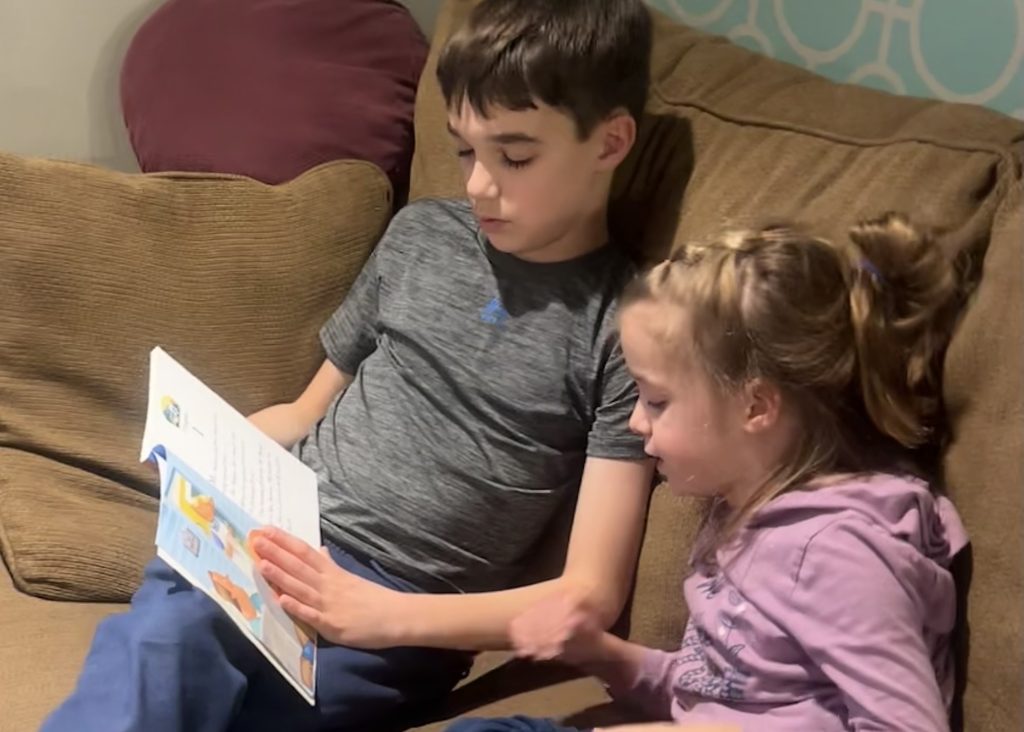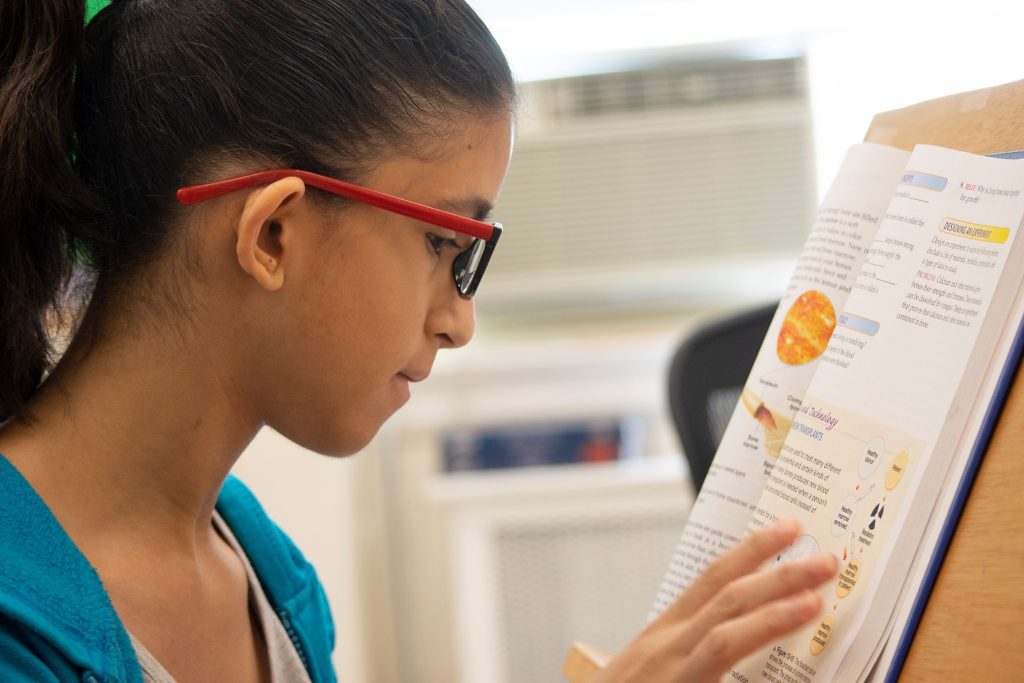The Monarch: Improving Braille Literacy for Students

Braille helps students who are blind or low vision with reading, writing, and comprehension so they can succeed in school and life. APH created the Monarch, a 10-line by 32-cell refreshable braille display which can render lines of braille and tactile graphics on the same surface, to increase student access to braille textbooks and classroom materials. The Monarch has spread its wings and is making strides to improve braille literacy for students of all ages.
One of the biggest advantages of the Monarch is its multiline braille display. Krystal Guillory, an itinerant Teacher of the Visually Impaired (TVI) from Ruston, Louisiana, has witnessed this first-hand as one of her students transitions from print to braille. “She loves the fact that the display appears as a half page of braille. She’s used to seeing a screen on the Chromebook where she can see paragraphs on a page.” Now, the Monarch appears similar except the words are in braille, not print. This was a huge motivator for the student to continue braille instruction.
The Monarch can also zoom in and out, allowing the copy on the display to appear single-spaced or double-spaced. When her students were younger, Krystal had to show them what single-spaced and double-spaced meant by writing copy on a Perkins Brailler. Today, the students can adjust the spacing in their documents on the Monarch with ease.
“My students have loved being able to write and edit on the Monarch. If they’re writing in a file and they need to go edit and hop around, they like it double-spaced so they can find their cursor more easily,” said Krystal. Her students call the cursor ‘the waffle’ based on the shape of its 9 braille dots. They use the braille keyboard or the directional cross key, or D pad as they call it, to pan the display. One student, who has some motor difficulties, has had success using the D pad with one hand to move the display and using one finger on her right hand to read braille that is double-spaced.
The Monarch has allowed Krystal’s students to read braille with both hands, returning to the traditional method of reading hard copy braille. One of Krystal’s adult students, who learned braille later in life, was able to drastically improve her reading speed on the Monarch. As she watched her read Alice in Wonderland, Krystal said, “I watched her hands, and they just got faster and faster. Reading on a braille display with multiple lines was more natural, like reading a physical book, and smoother as the student didn’t need to keep advancing one line at a time like they would on a one-line braille display.”
Student understanding of spatial awareness has also increased with the development of the Monarch. With ten lines of braille, they can now see centered chapter titles, paragraph and page breaks, formatted lists, and much more that wasn’t possible to discern on a one-line display. “When one of my students was writing or editing on the Monarch, she had fewer extra spaces,” Krystal said. “If she went to edit and correct something, add in a word or delete a word, she seemed to notice that she had extra braille cells in-between that she didn’t need, whereas, on the one-line braille display I’d sometimes see six spaces between the subject and the verb.”
Krystal believes that being trained on the Monarch before using the device with students will aid in her ability to teach braille literacy skills. “What happens with most TVIs is that you feel like you can only learn the basics of a new device and then you can’t get much further because you have to give it to the student,” Krystal said. The Monarch teacher training gave teachers the ability to learn the entire device before placing it in students’ hands. “It is empowering the TVI so that they are doing more braille literacy lessons for their students as well.”
Share this article.
Related articles

Braille Tales Grows Readers Both in and Outside of the Classroom
At APH, our Braille Tales books help introduce braille to young readers. By giving blind or low vision students books...

Building an Easy Transition to Braille Learning with Braille Bridge
Learning to read braille as an adult can be a daunting task. The majority of early braille learning materials often...

Louis and the AMP Database: Supporting Students and the Field
The Louis Database The concept of sharing information between braille-producing agencies dates back to the 1950s, when APH used a...
